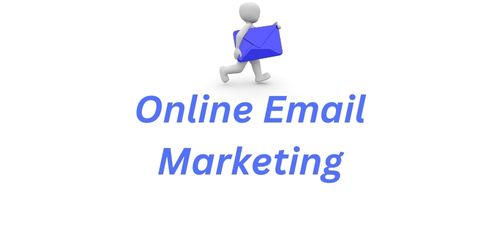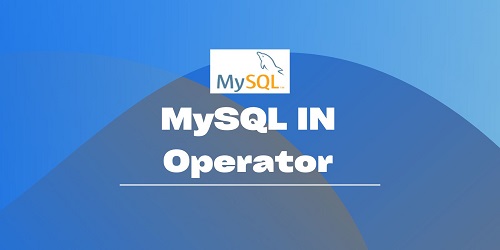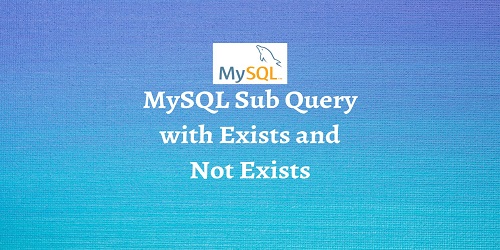Table of Contents
Online Email Marketing:
Online email marketing is the practice of sending promotional emails to a target audience to promote a product or service. It is a cost-effective way to reach many people and can be used for various purposes, such as building brand awareness, generating leads, or driving sales. Email marketing campaigns can include text, images, and links to a website and can be automated or sent manually. It is essential to obtain recipients’ permission before sending emails and comply with laws such as the CAN-SPAM Act.
Features of Online Email Marketing:
Some key features of online email marketing include:
(1) Email list management: Tools to create and manage email lists, segment them by demographics, interests, and behaviors, and automate targeted email campaigns.
(2) Personalization: The ability to personalize emails with the recipient’s name, location, purchase history, and other information.
(3) Automation: The ability to set up automated email campaigns, such as welcome messages, abandoned cart reminders, and birthday greetings.
(4) Reporting and analytics: Detailed reporting and analytics on email campaign performance, including open rates, click-through rates, and conversion rates.
(5) Integration with other marketing tools: Ability to integrate with other marketing tools, such as social media, CRM, and e-commerce platforms.
Benefits of Online Email Marketing:
(1) Increased reach: Email marketing allows you to reach a large audience quickly and easily.
(2) Cost-effective: Email marketing is relatively inexpensive, and it can be done in-house without the need for additional resources.
(3) Measurable results: Email marketing provides detailed analytics and reporting, making it easy to measure the success of campaigns and make data-driven decisions.
(4) Targeted messaging: Email marketing allows you to target specific segments of your audience with personalized messaging, increasing the likelihood of engagement.
(5) High ROI: Email marketing has a high ROI, with studies showing that for every dollar spent on email marketing, the average return is good.
(6) Increased brand awareness: Email marketing helps to increase brand awareness and build relationships with customers and prospects.
Best Online Email Marketing Tools:
(1) Aweber.
(2) GetResponse.
(3) ConvertKit.
These are some of the most popular email marketing tools available. Each of them has different pricing plans and features to offer. You can visit their websites to learn more and determine which one would be the best fit for your needs. For those who are new to the world of online marketing, these digital tools make designing and delivering messages simple and efficient. They also provide helpful reporting features to track audience engagement, allowing users to optimize their emails for the best results. By using the right tools in their workflow, businesses can maximize their reach and interact more effectively with their target market.
AWeber Tutorial:
How to build a Landing Page:
AWeber: Free email marketing and landing pagesSetting up a Campaign:
Create automated email sequences with AWeberDesigning your first email:
AWeber Free: Easy email marketingSending your first email:
Connect with customers 24/7 with AWeber FreeSetting up integrations:
AWeber Free: Email marketing for small businessesWordPress and Landing Pages:
AWeber Free: Email marketing for free. No credit card required.Convertkit Online Email Marketing Course:
- List Building Pep Talk.
- Sales Funnel Pep Talk.
- The Top Three Emails To Write That Will Boost Your Sales.
GetResponse Infographics:
Why is online email marketing so important?
Online email marketing is important for a number of reasons. First, it allows businesses to reach a large audience quickly and cost-effectively. Email marketing campaigns can be easily scaled up or down to reach the right number of people, and they can be targeted to specific segments of a mailing list, such as customers who have made a purchase in the past or who have shown interest in a particular product or service. Additionally, email marketing allows businesses to track the success of their campaigns, so they can make adjustments as needed to improve their results. Additionally, it allows for easy automation, personalization, and segmentation of the audience, which can improve the chances of engagement and conversion. It allows businesses to build genuine relationships with their customers, send them personalized messages, and respond quickly to comments and feedback. Keeping up with trends in email marketing, like automation and segmentation, can also help businesses increase click-throughs and conversions while better understanding their customer’s needs. Not only is email marketing cost-effective and measurable, but it can deliver tangible results that boost your ROI significantly. So if you want to make sure your business stands out from the competition, take advantage of the power of online email marketing.
How to create an effective online email marketing campaign?
Creating an effective online email marketing campaign can seem overwhelming, but by breaking it into steps, you can make the process easier. First, research potential audiences to ensure that your message is tailored to their interests and needs. Simplify this part of the process by specifying key demographic information such as age group and geographic location. Once you have identified an audience, decide on the content and format of your emails. Content should include descriptions of products or services that you offer while also staying focused on providing useful information that may be helpful to prospective customers. Lastly, utilize analytics tools like ClickMagick to measure the success of your email campaigns and make improvements as needed. An effective online email marketing campaign requires planning, but if done correctly can be a great way for businesses to drive traffic to their sites. An effective online email marketing campaign typically includes the following elements:
(1) A clear and compelling subject line that entices the recipient to open the email.
(2) A well-designed and visually appealing email template that is optimized for both desktop and mobile devices.
(3) A clear and concise message that communicates the value of the product or service being offered.
(4) A clear call-to-action (CTA) encourages the recipient to take a specific action, such as making a purchase or signing up for a free trial.
(5) Personalization and segmentation of the email list to ensure that the message is relevant to the recipient.
(6) A/B testing to determine the best subject line, design, and message.
(7) Tracking and analysis of the results to see how the campaign performed and make improvements for future campaigns.
(8) Compliance with email laws like CAN-SPAM Act and GDPR.
(9) It’s important to keep in mind that effective email marketing campaigns are not one-time sends but rather a series of emails that are sent out over time to a targeted list of recipients. It’s also important to test and optimize your campaigns to see what works best for your particular audience.
Tips for increasing open rates and click-through rates:
Email marketing is an effective way to reach your target audience, but in order to maximize results, it is important to pay attention to open and click-through rates. Strategies such as personalizing emails, creating engaging subject lines, providing value with relevant content, and sending emails at optimal time windows can help you boost open rates and click-through rates. Leveraging email analytics and testing different components of the email, such as subject line, layout, calls-to-action, etc., helps you determine what works best for your business. With the right strategies in place, you can reap the rewards of successful email marketing campaigns that generate leads, drive sales, and increase brand awareness. Here are the main tips for increasing open rates and click-through rates:
(1) Personalize your subject line and sender name: Personalization can increase open rates by up to 50%.
(2) Use a clear and compelling call to action: Encourage recipients to take action by including a clear and compelling call to action in your email.
(3) Segment your email list: By segmenting your email list, you can send targeted and relevant messages to specific groups of people, which can increase engagement.
(4) Keep your emails short and to the point: Long emails can be overwhelming and may not be read entirely.
(5) Test and optimize: Test different subject lines, sender names, and email content to see what works best for your audience.
(6) Timing is important: Send your email at a time when your audience is most likely to be checking their inbox.
(7) Use a responsive design: Make sure your email looks good on any device by using a responsive design.
(8) Optimize for the preheader: The preheader text is the snippet of text that appears below or next to the subject line in most email clients. Make sure to include a clear and compelling message in the preheader text to entice recipients to open the email.
(9) Use a clear and recognizable sender name and email address.
(10) Be consistent with your sending schedule, and it will help your audience know when to expect your email and increase open rates.
These are just a few tips to help increase open rates and click-through rates but keep in mind that there is no one-size-fits-all solution. The key is to test different strategies and see what works best for your audience.
Case studies of successful online email marketing campaigns:
Despite the ever-changing landscape of digital marketing, one timeless strategy for growth and success is to take cues from past successes. This is especially true in the realm of online email marketing campaigns – numerous companies have seen tremendous success by taking the time to study detailed case studies from those that have come before them. From understanding how to properly segment target audiences and refine message delivery to developing well-crafted content that resonates with subscribers – online email marketing provides many opportunities to unlock new levels of success. Thus, it is paramount that businesses seeking to leverage this powerful tool don’t overlook the benefits of learning from both successful and unsuccessful case studies. Here are some of the successful online marketing campaigns.
(1) Dropbox’s referral campaign: Dropbox offered its users additional storage space if they referred friends to sign up for the service. This campaign resulted in a significant increase in signups.
(2) Uber’s first ride campaign: Uber offered new users their first ride free if they signed up through a referral from a current user. This campaign helped Uber acquire thousands of new users in a short period of time.
(3) Warby Parker’s choose-your-own-adventure email campaign: Warby Parker sent out an email campaign that allowed recipients to click through different options and scenarios, ultimately leading them to a personalized product recommendation.
(4) Birchbox’s welcome email campaign: Birchbox’s welcome email campaign included a personalized discount code for new subscribers, which led to an increase in sales.
(5) PayPal’s abandoned cart email campaign: PayPal sent out an email to customers who had added items to their cart but didn’t complete the purchase. The email included a special offer and a link to the cart, resulting in an increase in sales.
How to measure the success of your online email marketing campaign?
As with any marketing effort, measuring your online email campaign success is essential to determine its effectiveness and decide whether or not to adjust or scale back its reach. Fortunately, digital platforms make it easier than ever to measure the results of your email campaigns – from open rates to click rates to subscriber numbers. You can even use link tracking and website analytics to determine how customers are responding once they leave their inboxes and visit your site or other related sites. There are several key metrics that can be used to measure the success of an online email marketing campaign, including:
(1) Open rate: the percentage of recipients who open the email.
(2) Click-through rate (CTR): the percentage of recipients who click on one or more links within the email.
(3) Conversion rate: the percentage of recipients who complete a desired action, such as making a purchase or filling out a form.
(4) Bounce rate: the percentage of emails that were undeliverable and returned to the sender.
(5) Unsubscribe rate: the percentage of recipients who unsubscribe from the email list.
(6) Revenue: the amount of revenue generated as a result of the campaign.
(7) To get a comprehensive view of the campaign’s performance, it is best to track all of these metrics over time and compare them to industry benchmarks and past campaigns.
Conclusion:
Online email marketing is a powerful tool that can be used to reach your target market, increase customer engagement, and generate leads. Not to mention the fact that it’s cost-effective due to automation. The ability to segment your audiences, monitor success metrics with analytics, and build customized campaigns allows you to grow your business exponentially without overly increasing your budget. No matter which email marketing service you choose for your campaigns, make sure you understand how it works. Take the time to create automated sequences and explore ways of repurposing content to maximize results. By introducing these strategies into your online email marketing efforts, you will be able to achieve success quickly and efficiently.









Comments (No)